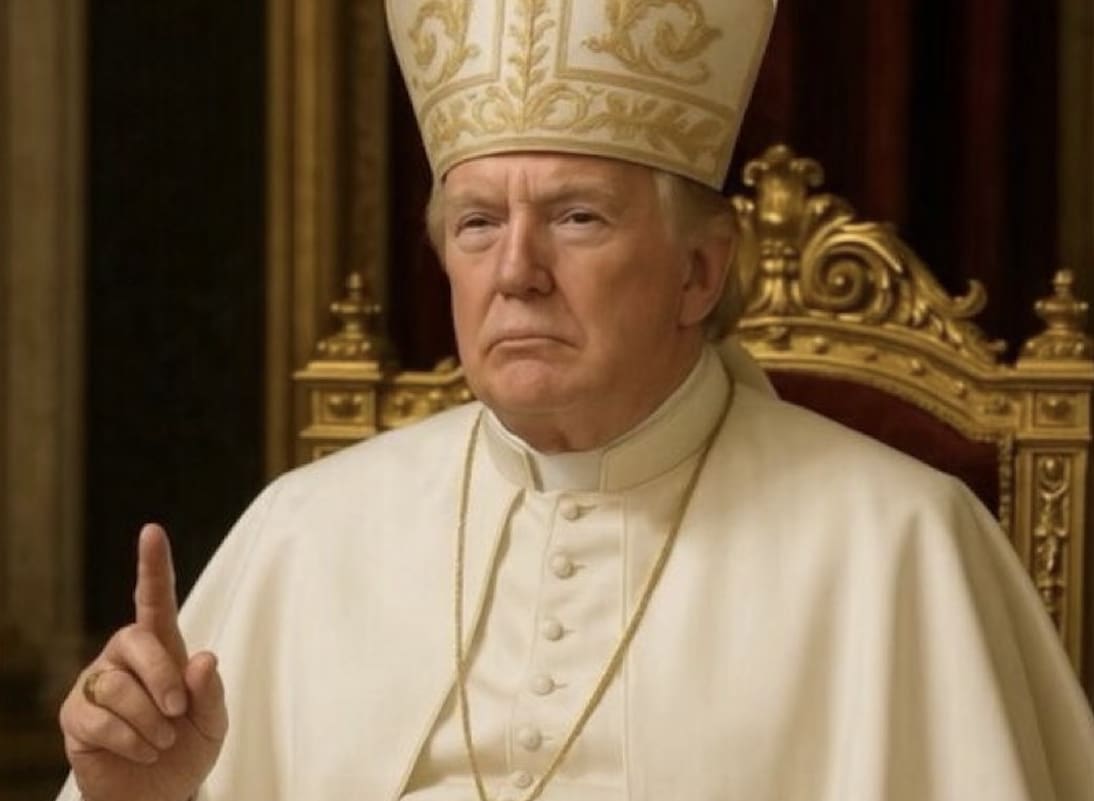
The digital age has ushered in an unprecedented era where technology, politics, and public discourse collide in ways that often blur the lines between reality and fabrication. One such collision occurred recently when former U.S. President Donald Trump shared an AI-generated image of himself dressed as the Pope on his social media platform, Truth Social. The image, later reposted by the White House on X, ignited a firestorm of reactions, ranging from amusement to outrage. This incident not only highlights the growing sophistication of AI but also raises critical questions about ethics, political strategy, and the fragility of public trust in the digital realm.
The Provocation and Its Reception
Trump’s post featured him adorned in traditional papal vestments, complete with a crucifix, just days after he quipped about wanting to “be pope.” The timing was striking—it coincided with the Catholic Church’s preparations to elect a new pope following the death of Pope Francis. While some dismissed the image as a harmless joke, others, like former Democratic congressional candidate Melanie D’Arrigo, lambasted it as a “mockery of religious figures” by someone who “broke all 10 commandments.” The backlash underscored a broader tension: the line between satire and sacrilege in an era where AI can fabricate hyper-realistic imagery with unsettling ease.
The controversy also exposed the dual-edged nature of AI’s creative potential. Detection tools confirmed the image as AI-generated, spotlighting how advanced models can produce content indistinguishable from reality. This blurring of boundaries fuels concerns about misuse—whether for political provocation, disinformation, or trivializing sacred symbols. As AI tools become more accessible, the incident serves as a cautionary tale about the need for ethical guardrails, particularly when public figures wield this technology to amplify divisive narratives.
Political Theater and Media Manipulation
Trump’s decision to share the image on Truth Social, his own platform, was no accident. It allowed him to bypass traditional media gatekeepers, reinforcing his long-standing strategy of controlling his message directly. This tactic, while effective for rallying his base, often sidesteps accountability. The post’s timing—during a sensitive period for the Catholic Church—suggested a deliberate provocation, leveraging controversy to dominate headlines. Critics argued it was a calculated distraction, while supporters framed it as classic Trumpian irreverence.
The incident also reignited debates about social media’s role in politics. Platforms like Truth Social enable politicians to circumvent fact-checking, creating echo chambers where misinformation thrives. Trump’s papal caricature exemplified this dynamic: a viral, AI-fueled spectacle that demanded attention but offered little substance. In an age where algorithms reward outrage, the line between political discourse and performance art grows thinner by the day.
The Bigger Picture: Ethics in the Age of AI
Beyond the immediate uproar, the episode underscores broader societal challenges. AI’s rapid advancement demands urgent conversations about accountability. Should there be restrictions on using AI to mimic religious or cultural figures? How can platforms mitigate harm without stifling creativity? The Catholic Church’s global influence makes it a potent case study; trivializing its symbols risks alienating millions, especially during moments of grief.
Moreover, the incident highlights a cultural shift: the erosion of shared truths. As AI-generated content proliferates, public discernment becomes paramount. Educational initiatives, transparent labeling of synthetic media, and robust detection tools are essential to combat manipulation. Yet, as Trump’s post proved, technology often outpaces regulation—and ethics.
Conclusion
The AI-generated image of Trump as Pope is more than a bizarre footnote in digital history. It encapsulates the chaos of modern communication: a blend of technology, politics, and provocation with far-reaching consequences. As AI continues to evolve, so must our frameworks for responsible use—balancing innovation with respect for cultural sensitivities and truth. The digital age rewards audacity, but its unchecked excesses threaten to undermine the very foundations of informed democracy. The question remains: Will we harness AI’s potential wisely, or let it become another tool in the arsenal of chaos? One thing is certain: in this new era, the stakes—and the absurdities—have never been higher.






